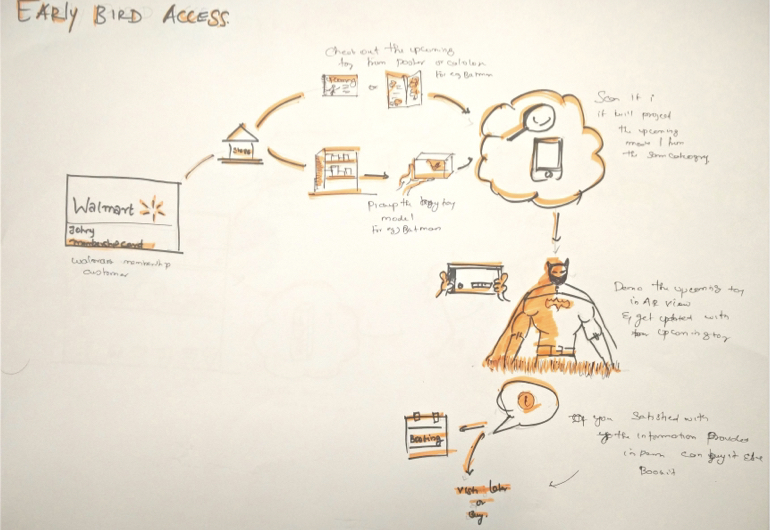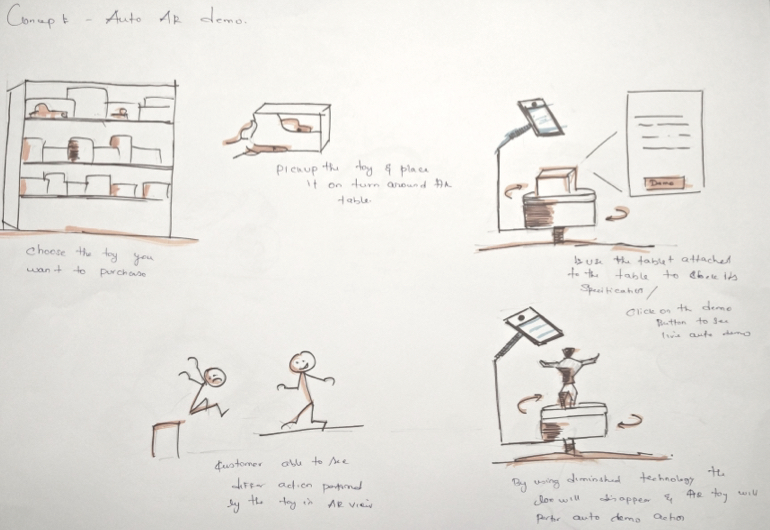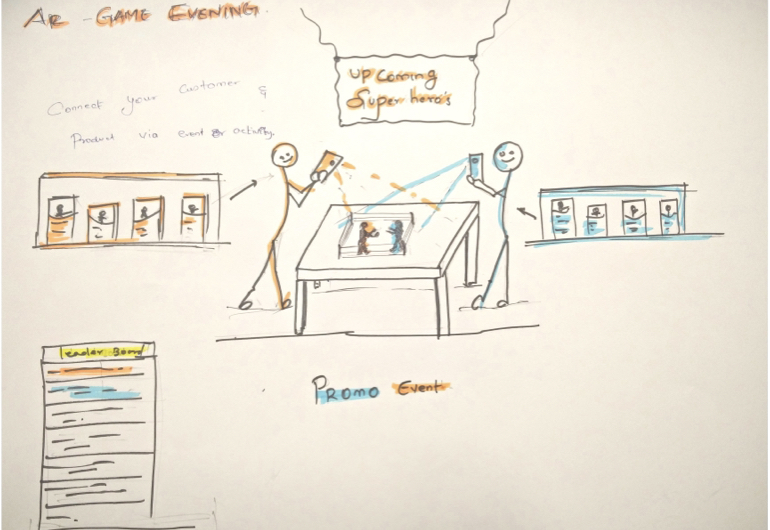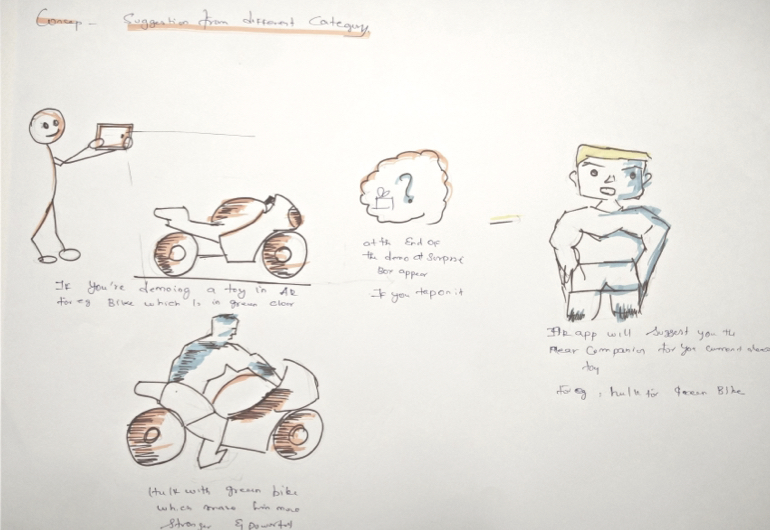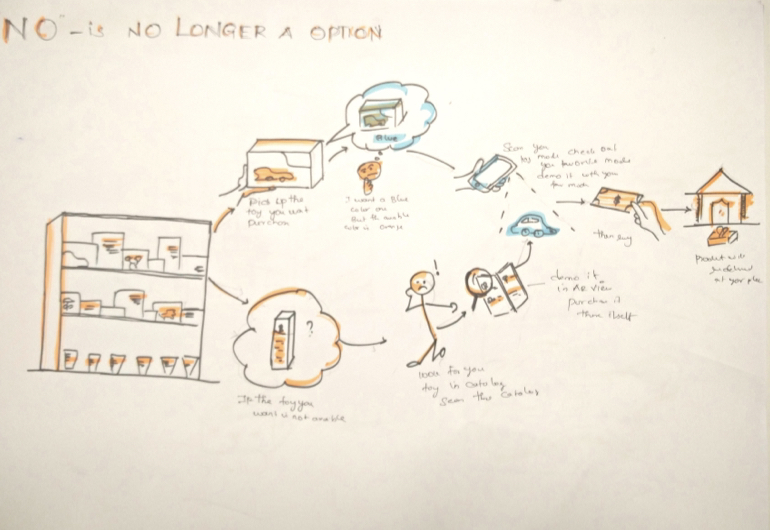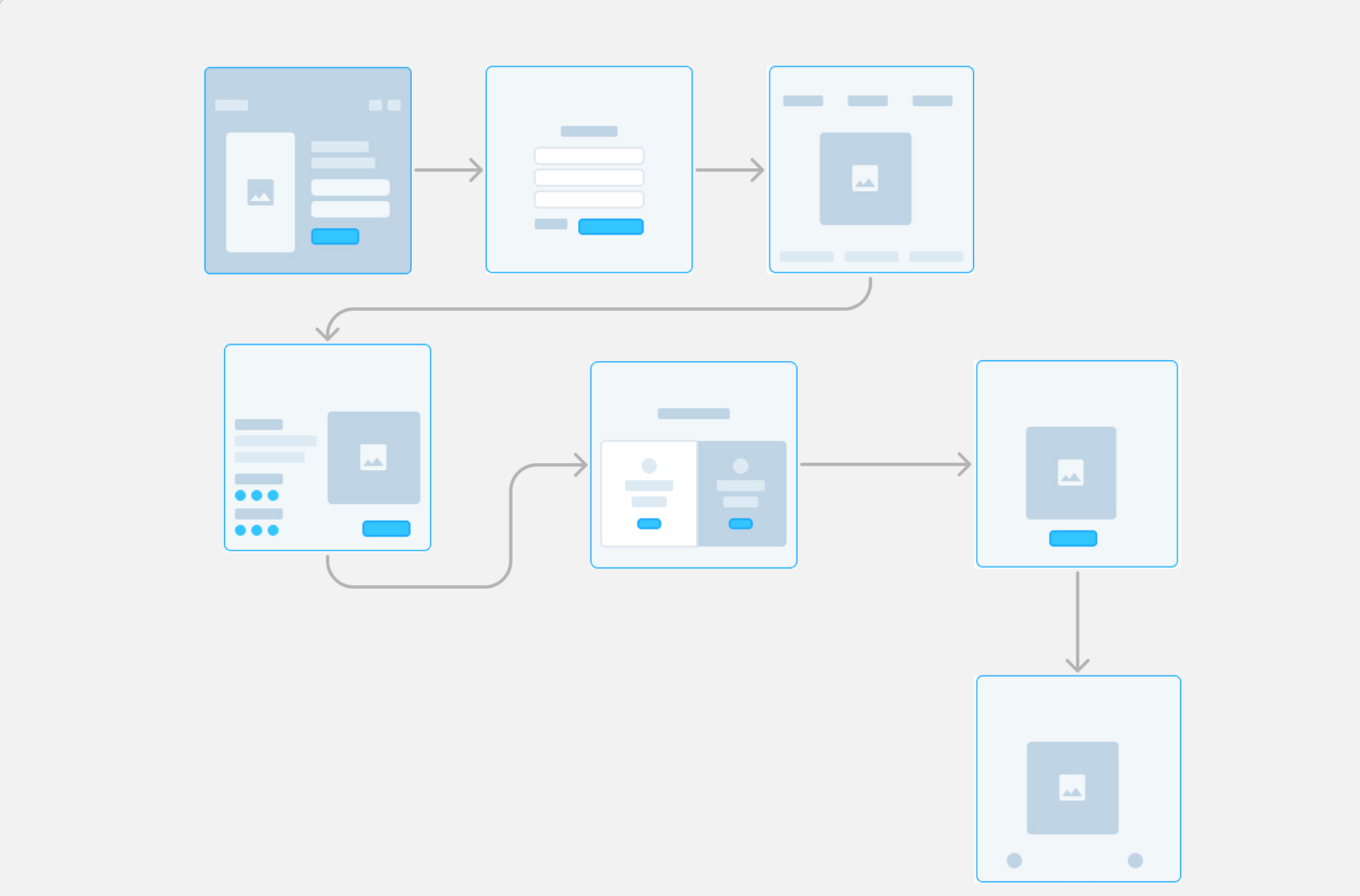Walmart - AR Shopping Experience
Company
Walmart
Role
Researcher, Product designer, Prototyper
Timeline
6 months
Tools
Figma, Unity3d, Sketch, Xcode
Design the future of the shopping experience for Walmart customers. Though Walmart labs gave the initial direction of the Project, this Project is a Partially Blue sky approach because of Walmart’s diverse domain in the shopping experience.
Understanding and identifying the scope for designing experiences for future shopping customers with the help of a user-centric design method. Which eventually should align with the business model of Walmart.
The motivation behind this design project was to think of a new customer experience at Walmart for the younger generation about 5-10 years later in the future
Presented final prototype and recommended design features with senior leadership members and stakeholders across the globe within the organization.
It is An Augmented reality-based experience to enhance Walmart's toy shopping experience. Customers can experience a product and its functionality in-store irrespective of its shape, size and price. This AR experience was designed using gamification, game design and user-centric design techniques to make the shopping space more than a shopping
Actual Reality
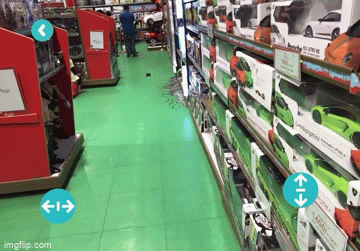
Customers can experience the product in real life without unpacking it using the Augmented reality technology from their mobile devices. More than checking out the visual experience, customers can virtually check how the product works or functions.
Customization and information

Customers can experience the product in real life without unpacking it using the Augmented reality technology from their mobile devices. More than checking out the visual experience, customers can virtually check how the product works or functions.
Game Mode
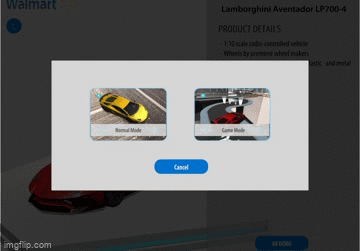
Customers can experience the product in real life without unpacking it using the Augmented reality technology from their mobile devices. More than checking out the visual experience, customers can virtually check how the product works or functions.
Intial Brief
"How might we design a solution for enhancing the in-store shopping experience of Walmart customers"
The Design Process
The Design Process used in this project to arrive at a design solution is a variation of the Double Diamond, originally created by the British Design Council.
The process involves discovering insights into a given problem through an exhaustive research, defining the right people and area to focus on, framing concise problem statements, designing potential solutions, and evaluating them to come up with the right solution to be prototyped, tested and built.
What we got here?
Design the future of the shopping experience for Walmart customers. Though Walmart labs gave the initial direction of the Project, this Project is a Partially Blue sky approach because of Walmart’s diverse domain in the shopping experience.
Clearing the chaos- domain understanding
During the initial phase, the open-ended brief I tried to solve was complete chaos because of Walmart’s diverse domain in the shopping sector. To solve this chaos and narrow down the problem area, I have undergone extensive desk research, which involves a literature study drawn from existing sources of information, which was then factored into behavioural patterns and user understanding. Data was taken from various places, including surveys, competitive analysis, magazines, newspapers and educational establishments.
Key findings on customer shopping journey
Planning before shopping
Planning before shopping will give clarity on purchase, which saves time and effort in store
75%
75% of shoppers have used their mobile devices in a physical store.
Customize & interact
Option to customize or to interact with the product to satisfy the customer needs more effectively and efficiently.
Toy shopping
With the initial finding, I have made concepts keeping Walmart domains and future technologies as an enabler to ideate. Later, an Idea validation UX method with leaders and professionals within the organization was used to identify the potential design direction. It helped me to prioritize the best ideas, Identify the best customer segment and uncover the market strategy for Walmart. As a result, the critical takeaway is that Toy shopping at Walmart needs refinement and a better shopping experience, which I only partially considered as face value to take as the final direction. With this narrowed-down scope, I deeply understand the potential of viewing the Toy section as a design space.
Why Toys? - Validation
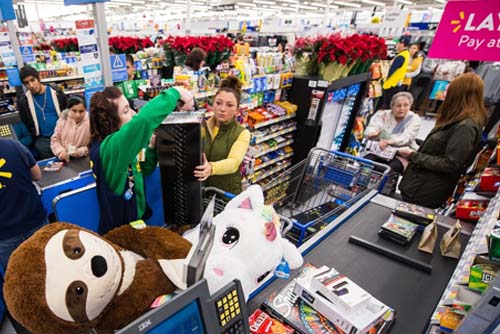
Walmart Sale on Black Friday - 2018
As a result of Black Friday, the 2018 toy department made the highest revenue among other departments. And also, Walmart has announced that it’s “America’s best toy shop” in a bid to be thought of not only as America’s giant Toy.
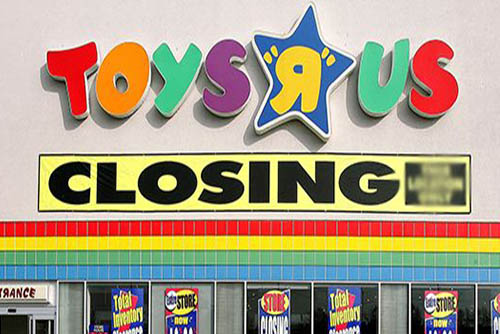
Fall Of Toys R us - 2018
Many of the changes Walmart is making to its toy section, which it calls its “America’s best toys shop” initiative, are permanent and will last even after the holiday season. The bold move into toys is likely a result of Walmart seeing an opportunity after the bankruptcy and liquidation of Toys R Us.

In 2018 hot wheels sales alone, 43.5 % increased compared to the previous year. Walmart will be expanding its selection by 40% online. 30% of the toys it stores will be brand new. Walmart will also make room for more toys in stores; in some locations, it will even add more aisles to stock them.
Hot Wheels Sales 2017 -2018
Desk research - on Users and Technology
To develop user-centred design concepts, I have done intensive desk research on the Toy and Augmented reality domain to understand the competitors and their trends, user behaviour and priority during their toy shopping journey and how unique users’ toy shopping journey is.
Key findings & Insights
Impact of "Toys r Us" in the 2018 holiday sale
Last year, shoppers purchased toy gifts from Walmart, Target, and Amazon along with Toys “R” Us. In 2018, with TRU gone, many shoppers will increase their spending with the retailers they were already patronizing—namely, Walmart, Target, and Amazon.
Most popular sectors of AR retail
The data map clearly says that toys are one of the growing sectors of AR retail. And also, Walmart is making moves in toy departments in upcoming years. AR will help to give a newer experience for toy shoppers.
Different paths to purchase toys
There are multiple paths to purchase toys, which range from a simple two-step process to a longer and more complex four-step process. The primary factor in determining the length and complexity of this path is the level of deliberation the parents require before buying. This need for consideration is wholly tied to the perceived hurdles or resistance that parent experiences for the given Toy or game.
Interviews
Objective – What I am looking for?
- Interviewed different demographics to understand users’ behaviour, experience, and top priority in toy shopping.
- And using the data from primary research as empirical data to validate my desk research.
- To derive insights from research data points.
Semi-structured interview and SME interviews


Primary Research - Asking People...
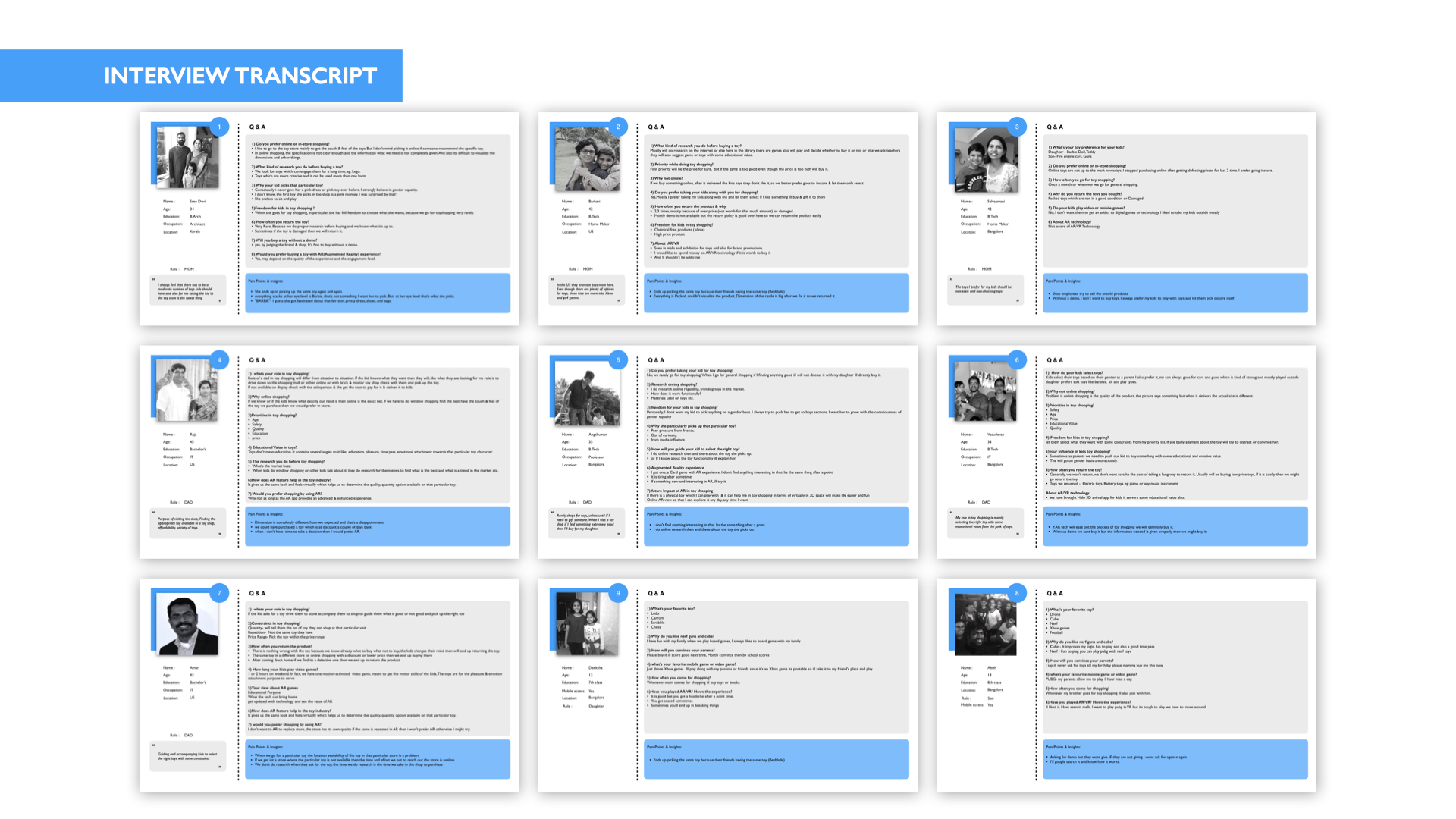


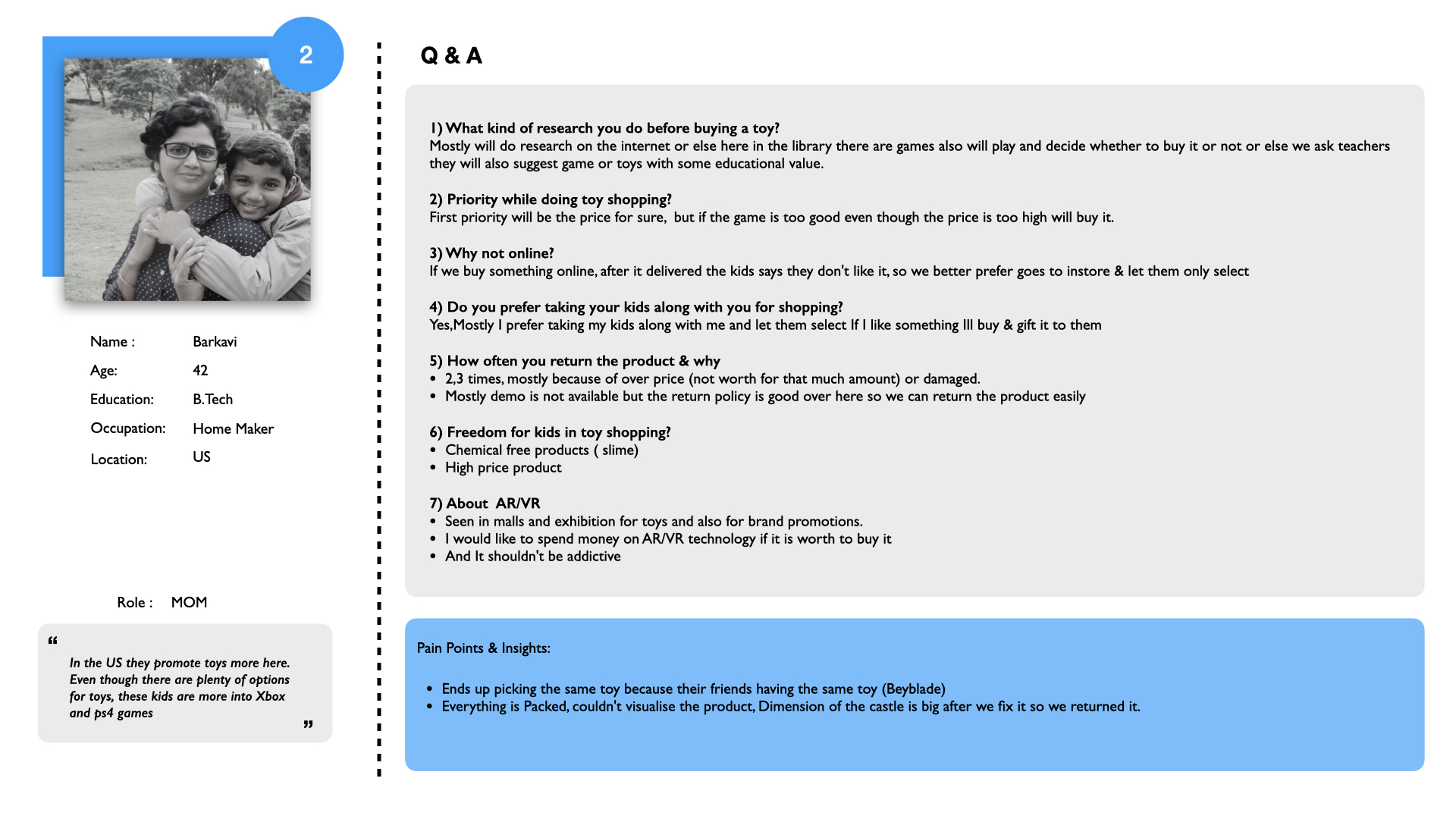

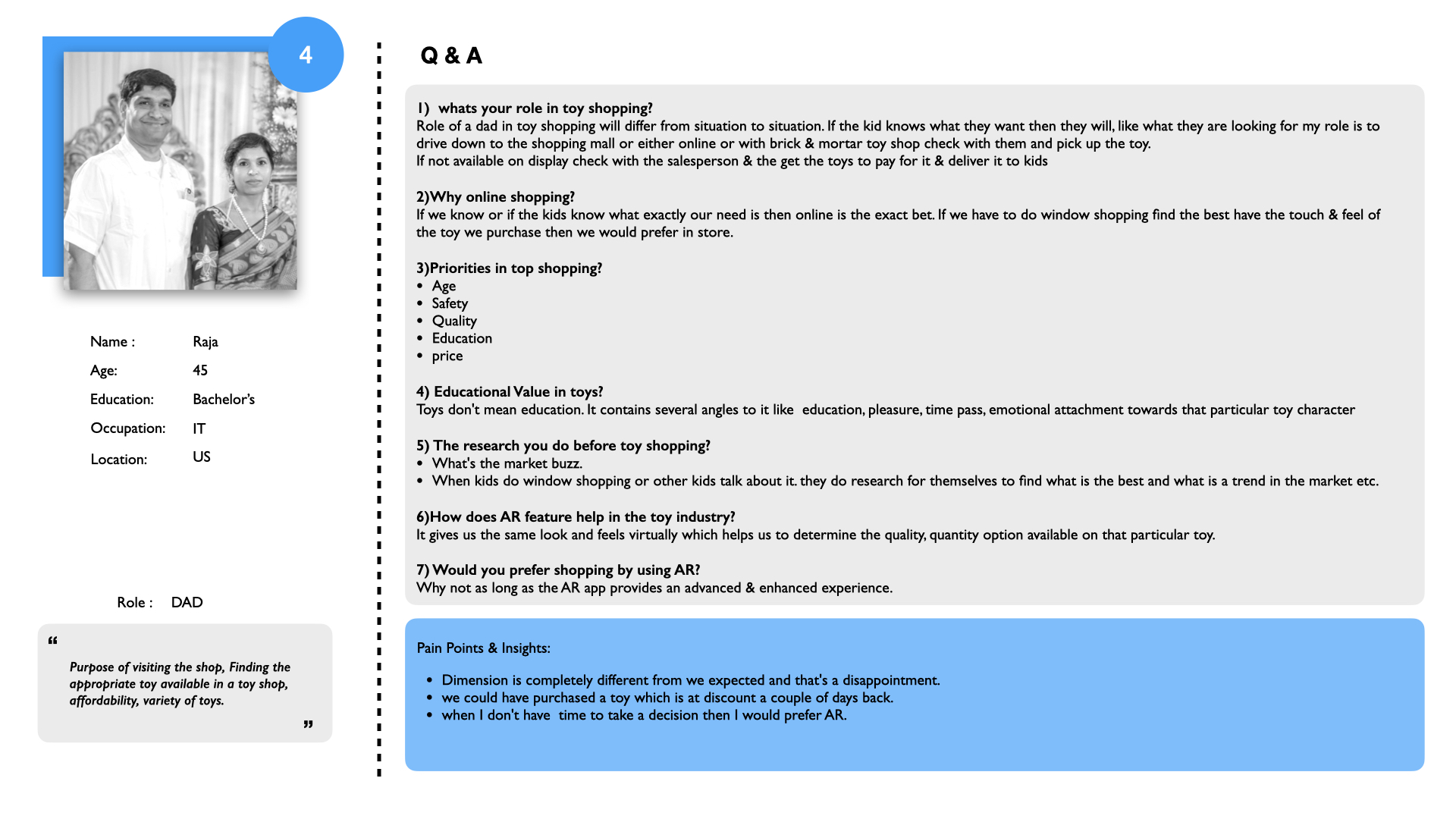
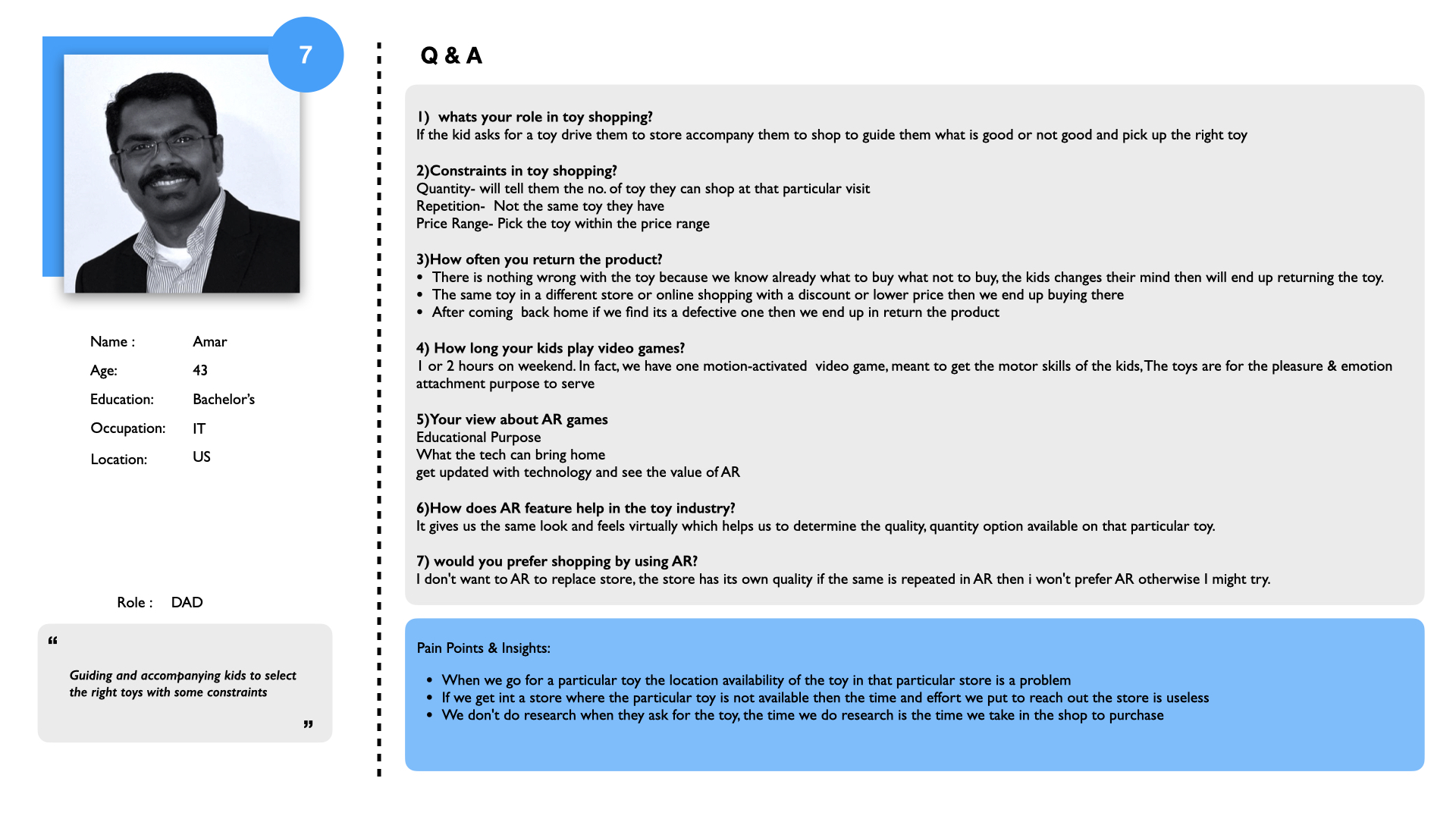
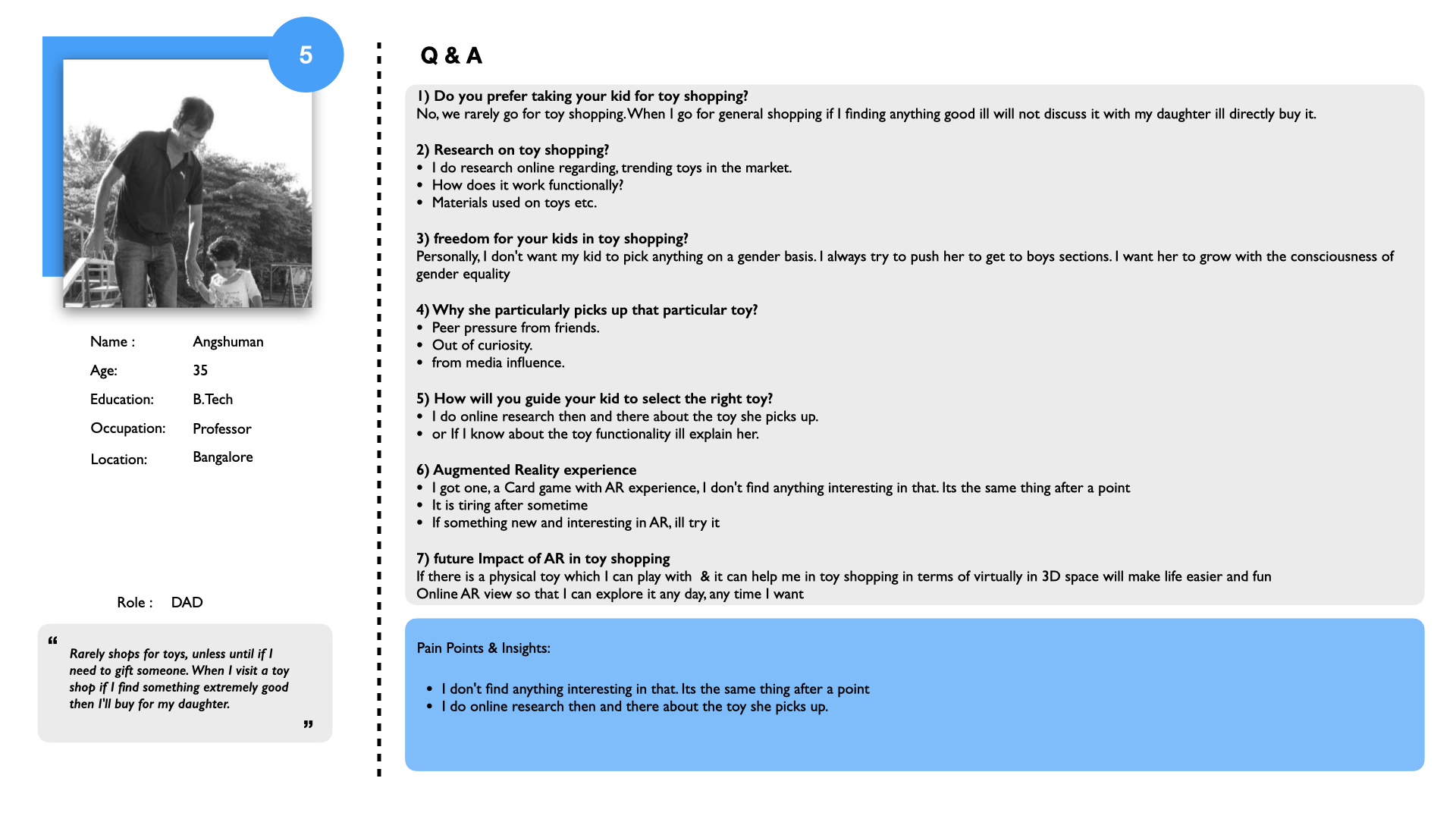
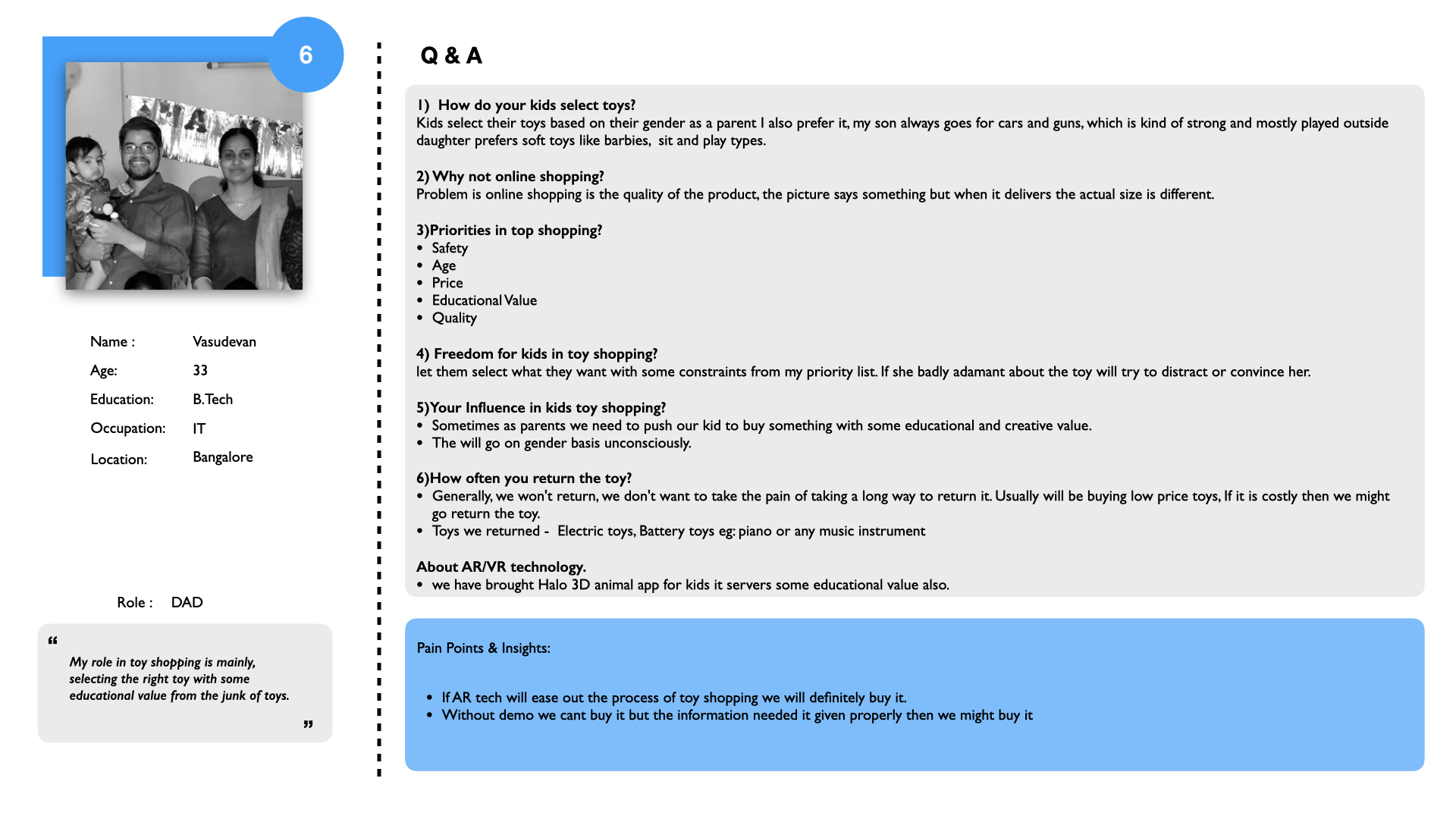
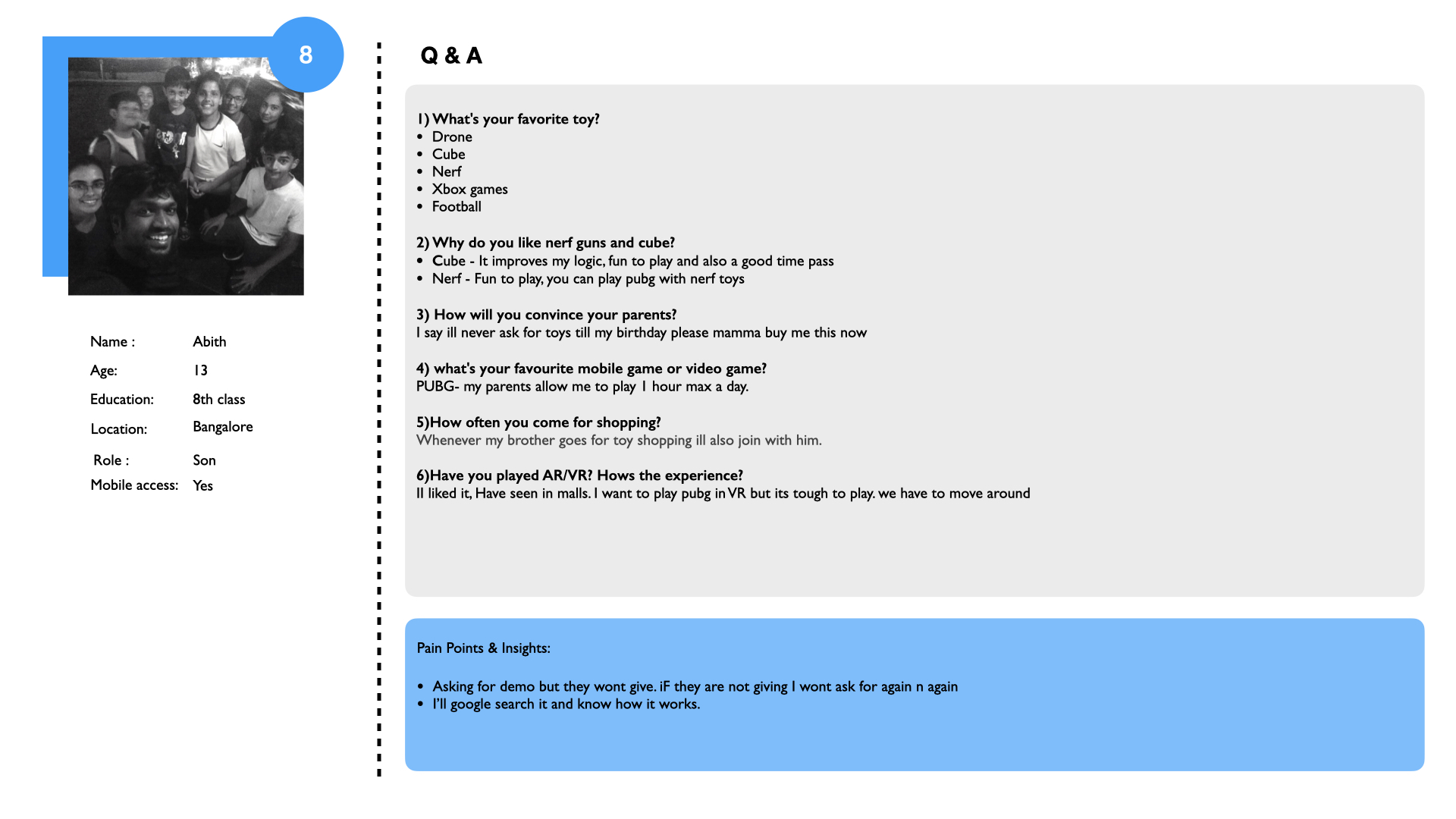
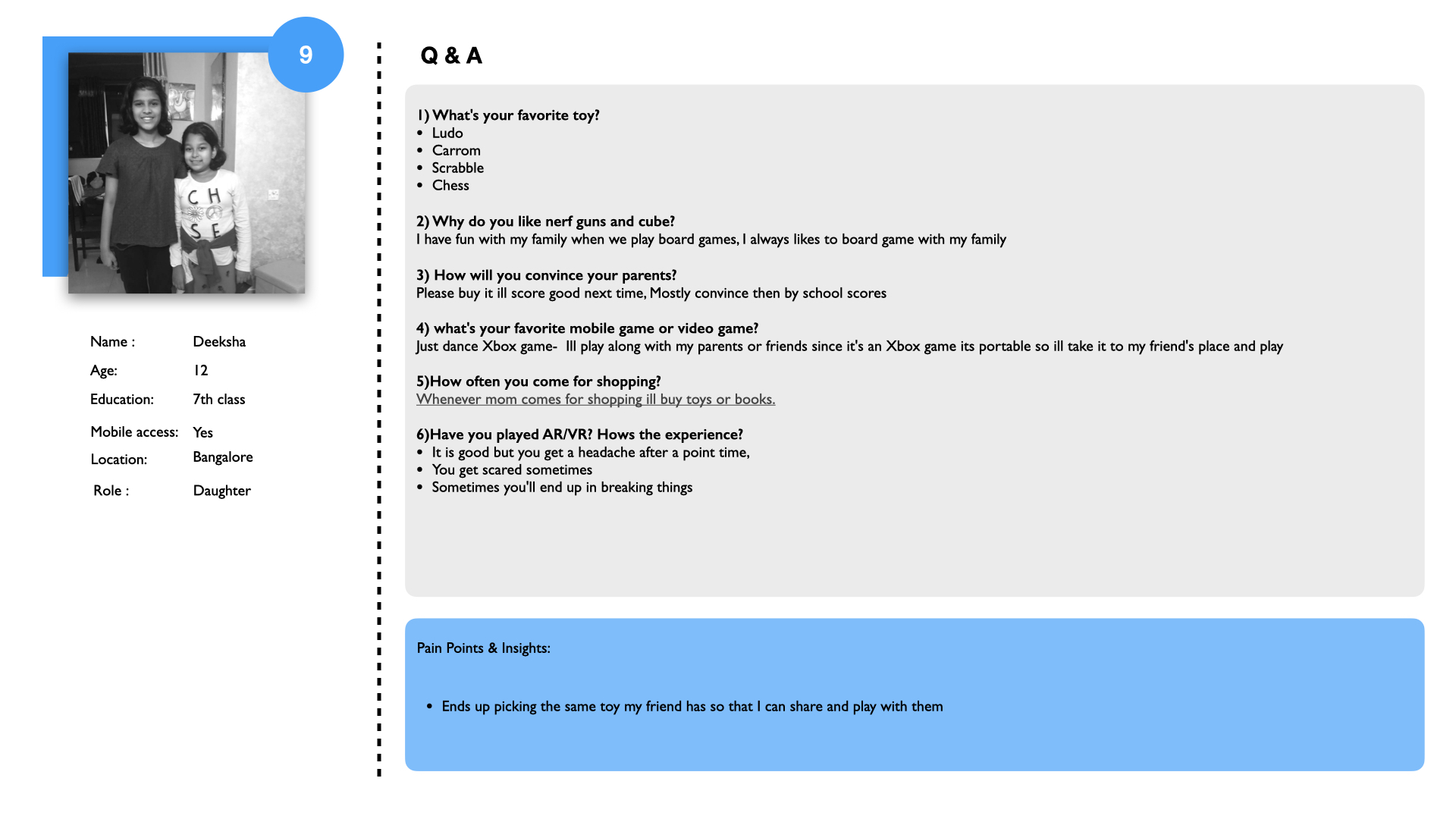

Affinity Mapping
The data from the interviews and desk research were synthesized to derive high-level insights to develop rationally futuristic concepts to enhance Walmarts in-store toy shopping experience.

Giving meaning to the synthesized data
By analyzing and synthesizing the data from desk research and user interviews, I derived the top five insights which focus on user core needs and wants while doing indoor shopping at Walmart. The insights were supported by empirical data from the research. These key insights are used to narrow down to design direction to ideate user-centered design concepts
Insights
- People demand that they could have purchased if the demo is available or if needed information is delivered correctly.
- The demo of the toy will helps to understand more about the product, from the look and feel to the dimension.
- The time parents do research is the time they take in the shop to purchase.
- 71% would shop at a retailer more often if AR were offered. (source from www.statista.com )
- The product which require visual analysis to see the depth, dimension & relative space with the environment can be brought in AR.
- If AR could minimize the time & effort, then they will try AR/V technology.
- Although there are unisex toys, subconsciously, boys prefer strong & outdoor toys, and Girls like to sit & play with toys.
- Boy kid preference – Nerf toys, Lego toys, hot wheels Etc
- Girl kid preference- American girl dolls, Barbie dolls, Lego toys Etc.
- Parents say they will give complete freedom to their kids to shop for and choose the Toy (s) they want within a price range.
- Even though the price is at the top of the priority list, if the parents feel the Toy is excessively satisfying, they will buy it with
- Constraints like age appropriateness, quality & functionality of the Toy.
- The current retail market for AR/VR is 500 million U.S. dollars. By 2025, it is predicted that the demand for augmented reality will be worth 1600 million U.S. dollars.
- 40% Would be willing to pay more for a product if AR were part of the Shopping Experience
Redefined Brief
"How might we enhance the Walmart in-store toy shopping experience by using Augmented Reality?"
No more guesses on how the new piece of Toy will work. At least that’s the idea behind the new AR Walmart App.; clear your guesses and confusion in the store by demoing it without unwrapping the Toy. Check out the specs and functionalities of the Toy in AR mode just by scanning the Toy by using Walmart AR App…
Downselection
The ideas voted fall under three main buckets, which are informative, experience and engagement—considering these three core aspects as principles for creating a final design idea which will satisfy the user’s need.

Informative

Experience

Engagement
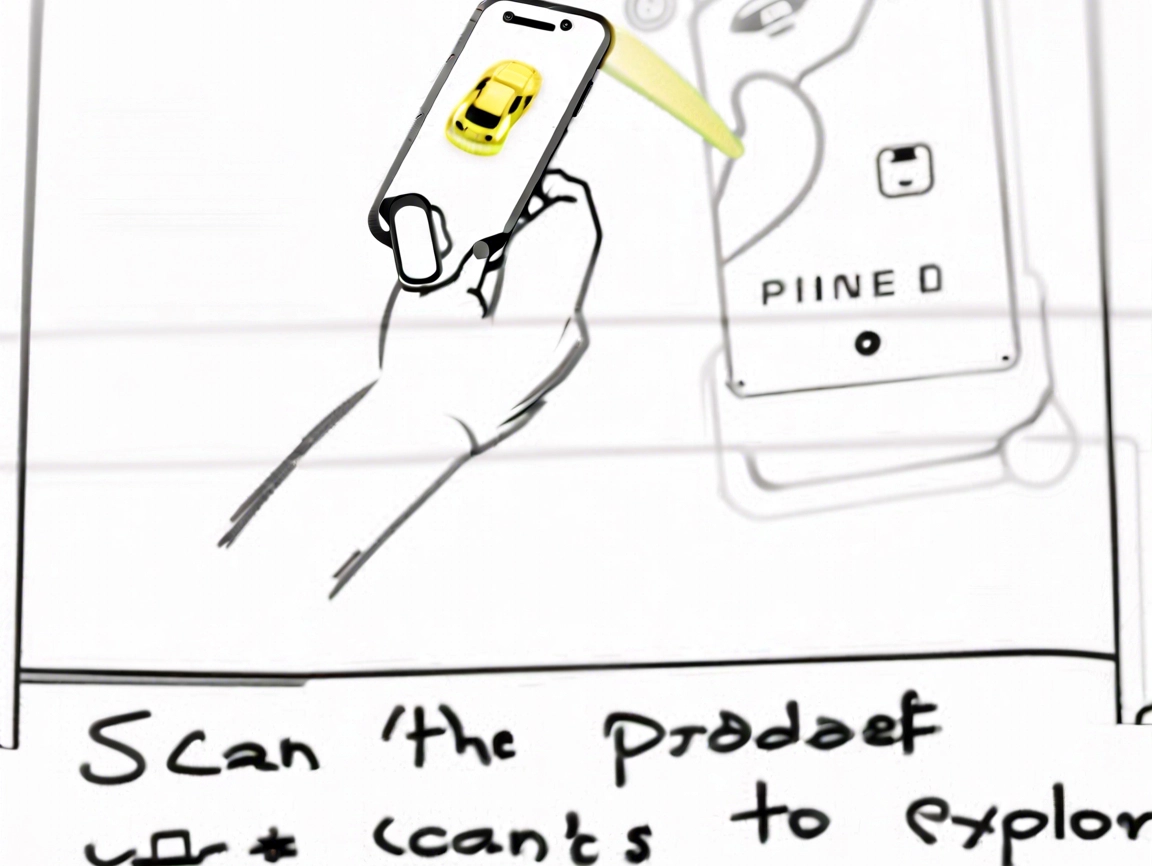

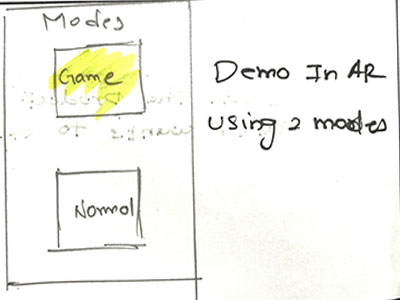
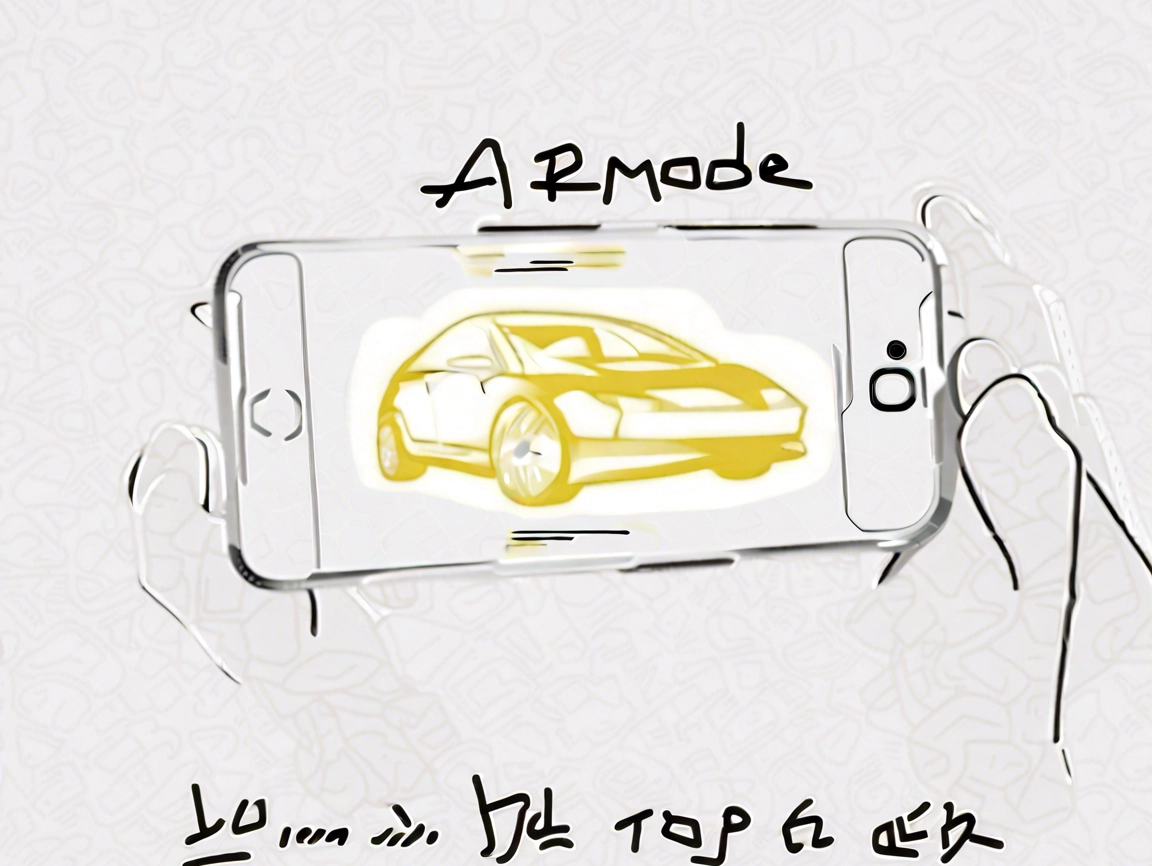

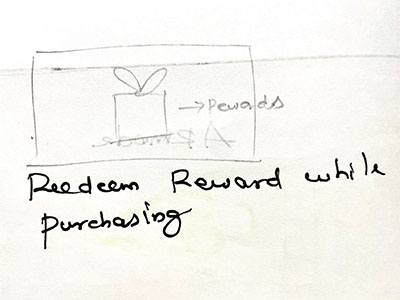
Observations & Walkthrough
Conducted user testing with strangers in toy shops in India with a diverse set of people, which includes parents, kids and gift buyers. The feedback from the customers helps us to reflect on the design we made. The project timeline and viability were considered to act upon the feedback of the customer.
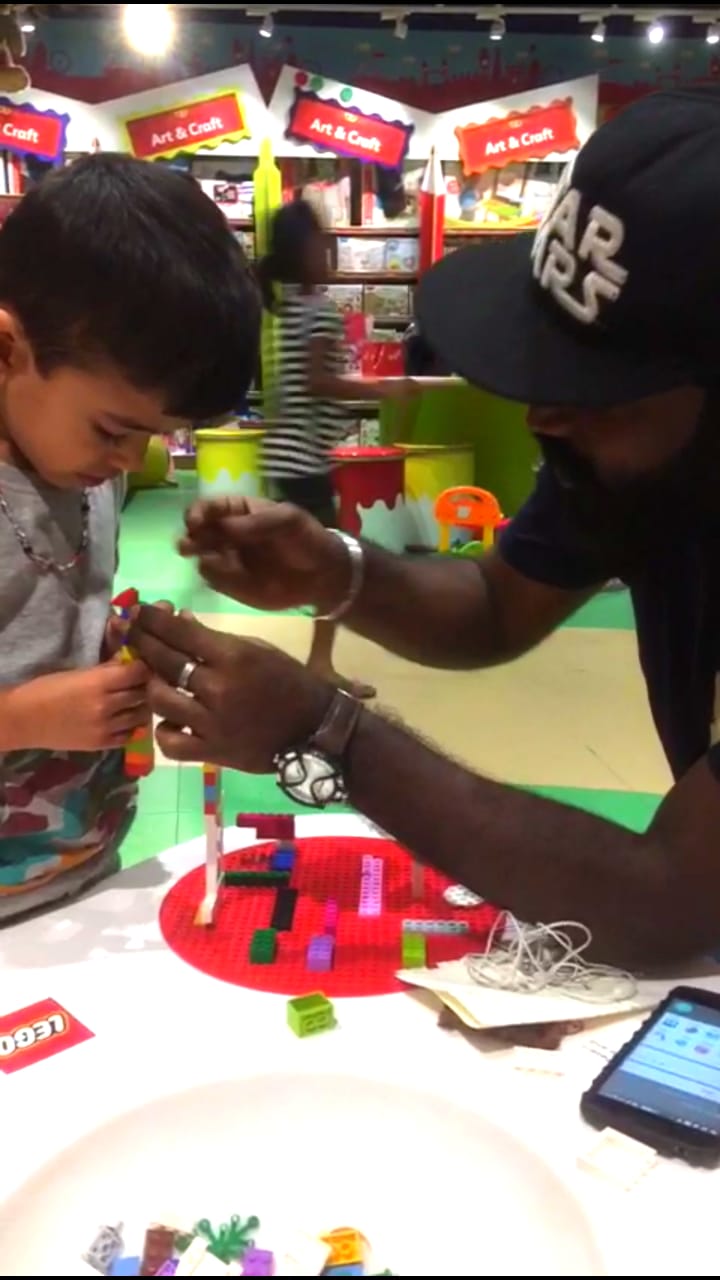

What we learned
- Not everyone’s phone is AR compatible.
- Another significant note is that we found the experience from the Mobile screen and Tablet screen had a huge experience difference for the first-time users. People preferred tablets over mobile phones.
- The game mode is not user-friendly for parents or kids who are first time user.

- Noticed, Users are expecting appreciation or rewards for their effort in game mode.
How we responded
- In-House Tablet devices will be provided to the users to experience the toys in AR, where all three usability issues were addressed, like compatibility, memory space and a Bigger screen. And also it solves many other technical aspects like charging, initial setup, assistance Etc.

- Enabling normal mode where customers can check out the feature and properties of the Toy in AR mode. It gives the feeling of control to the user

- Introducing an Inhouse reward system in the game mode, where users can redeem the coupon if they purchase the product.
Reflection and retrospect
With a background in game design, the design thinking approach was slightly different from a conventional UX design. During my initial days at Walmart, I used a traditional game design process to address a user-centric problem. The output of this process created ambiguity and uncertainty. But with industry experts as a mentor, I got the liberty to track back and start from the beginning, I also got time-to-time inputs from mentors to stay on track, and the organization also helped me extend my internship timeline.
Though designers often work with a gut feeling on their journey, As emerging designers, we have to understand that industry experts go for a gut feeling. The approach is based on their previous experience in the related domain. As a young designer, it’s always advised to back your design process with data that will help sell your stories better and others to make your concept believable.




